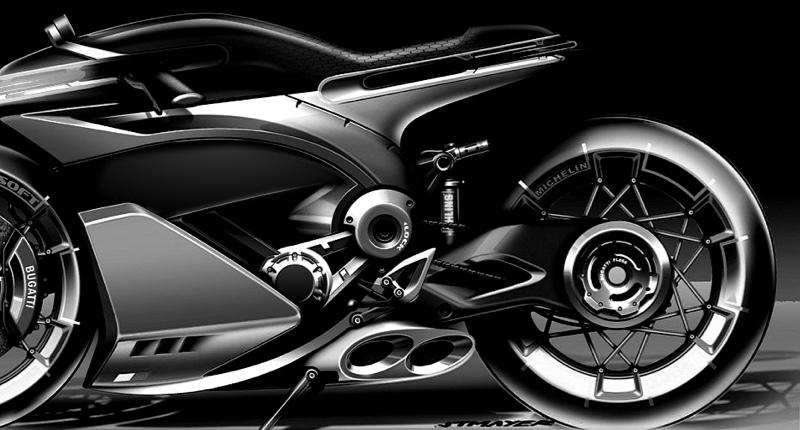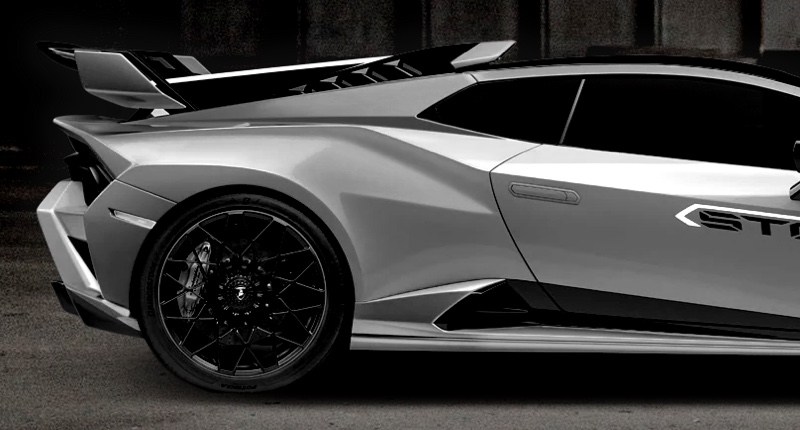Custom Carbon Fiber Motorcycle Parts: Benefits & Tips from Supreem Carbon
- Introduction: Why Custom Carbon Fiber Motorcycle Parts Matter
- The Core Benefits of Carbon Fiber for Motorcycles
- Improved Strength, Stiffness, and Fatigue Resistance
- Enhanced Aesthetics and Customization Options
- Corrosion Resistance and Durability
- Design and Manufacturing Considerations for Custom Parts
- Layup, Tooling, and Surface Finish
- Typical Lead Times and Production Scale
- Cost, ROI, and Value Considerations
- Comparing Materials: Weight, Strength, and Cost
- Practical Tips for Ordering Custom Carbon Fiber Motorcycle Parts
- Provide Accurate Dimensions and Mounting Points
- Ask About Manufacturing Processes and Quality Control
- Maintenance, Repair, and Long-Term Care
- Repairability and Crash Considerations
- How to Choose a Reliable Manufacturer — Why Supreem Carbon
- What to Request from a Supplier
- Installation and Fitment Tips for Custom Parts
- Use Proper Fasteners and Torque Settings
- Conclusion: Smart Investment for Performance and Style
- Frequently Asked Questions
- Sources and References
Introduction: Why Custom Carbon Fiber Motorcycle Parts Matter
Custom Carbon Fiber Motorcycle Parts: Benefits & Tips is a practical guide for riders, builders, and shops looking to upgrade performance, aesthetics, and durability. Carbon fiber composites are increasingly used on motorcycles because they offer an excellent strength-to-weight ratio, superior stiffness, and High Quality appearance. This article explains the real benefits, cost and manufacturing considerations, maintenance advice, and how to pick a reliable manufacturer like Supreem Carbon.
The Core Benefits of Carbon Fiber for Motorcycles
Performance and Weight Reduction: Carbon fiber parts can significantly reduce mass compared with traditional materials. Typical weight reductions range from 10% to 50% depending on the original material (aluminum, steel, or plastic) and component design. Reduced unsprung and rotational mass improves acceleration, braking, and handling.
Improved Strength, Stiffness, and Fatigue Resistance
Strength and stiffness are key reasons builders choose carbon fiber. Properly designed carbon composite parts can match or exceed the stiffness of metal equivalents while offering high fatigue resistance. This is especially valuable for fairings, subframes, fenders, and bodywork where rigidity improves aerodynamic stability and rider feedback.
Enhanced Aesthetics and Customization Options
Carbon fiber has a High Quality visual appeal—visible weaves, matte or glossy finishes, and the ability to combine with colored resins or clear coats create bespoke looks. Custom Carbon Fiber Motorcycle Parts: Benefits & Tips includes both performance and styling advantages—owners can request unique weaves, patterns, and finish levels to match a build or brand identity.
Corrosion Resistance and Durability
Unlike many metals, carbon fiber composites do not corrode. With correct resin systems and finishes, parts resist environmental degradation, making them excellent for long-term exterior components. Note that impact behavior differs from metal; composites may crack or delaminate under severe impact rather than bend.
Design and Manufacturing Considerations for Custom Parts
Material Selection and Resin Types: Epoxy resins are commonly used for high-performance motorcycle parts due to better mechanical properties and adhesion. Thermoset prepregs or wet layup processes are selected based on budget, performance, and production volume. Choosing the right fiber orientation and weave (unidirectional, 2x2 twill, plain weave) affects strength and finish.
Layup, Tooling, and Surface Finish
Tooling quality—molds and jigs—directly impacts fitment and final surface finish. High-precision molds reduce trimming and fitting time. Finishing choices (clear coat, matte, painted) determine UV resistance and scratch protection. For visible parts, a high-gloss clear coat over a well-aligned twill weave is popular.
Typical Lead Times and Production Scale
Typical lead times for custom carbon fiber motorcycle parts range from 2–8 weeks depending on part complexity, tooling needs, and production scheduling. For prototypes or one-offs, expect the higher end; for repeated orders with existing molds, lead times shorten considerably.
Cost, ROI, and Value Considerations
Price Drivers: Raw material (carbon fiber fabric or prepreg), labor-intensive layup, tooling, and finishing are main cost drivers. Custom one-off parts are costlier per unit than small-batch runs. However, the perceived value—increased bike value, weight savings, and unique aesthetics—often justifies investment for enthusiasts and professionals.
Comparing Materials: Weight, Strength, and Cost
Table: Material Comparison for Common Motorcycle Parts
| Material | Relative Weight | Relative Strength/Stiffness | Typical Cost Level |
|---|---|---|---|
| Steel | High | High, ductile | Low |
| Aluminum | Moderate | Good | Moderate |
| ABS Plastic | Low | Moderate, less stiff | Low |
| Carbon Fiber Composite | Low (10–50% lighter than metal/plastic depending on part) | High stiffness-to-weight ratio | High |
Practical Tips for Ordering Custom Carbon Fiber Motorcycle Parts
Define Purpose and Prioritize: Start by listing the primary purpose—weight reduction, styling, protection, or a mix. Prioritize critical properties such as impact resistance for fenders versus stiffness for structural components.
Provide Accurate Dimensions and Mounting Points
Accurate templates, CAD files, or 3D scans reduce tooling iterations and ensure a better fit. If possible, provide photos and measurements, and be ready to approve prototypes or mock-ups before full production.
Ask About Manufacturing Processes and Quality Control
Ask potential suppliers about layup method (prepreg vs wet layup), curing process (room-temperature vs autoclave), and QC protocols. Certifications (ISO 9001) and experience with motorcycle parts help ensure consistent outcomes.
Maintenance, Repair, and Long-Term Care
Cleaning and UV Protection: Use mild detergents and non-abrasive cloths. High-quality clear coats are essential for UV stability; inspect coating for chips and touch-up as needed. Avoid harsh solvents that can attack resin systems.
Repairability and Crash Considerations
Small scratches or cracks may be repairable with patching and resin infusion; however, severe delamination or structural damage typically requires replacement. Keep spare parts or quick-release mounts for frequently replaced exterior items to minimize downtime.
How to Choose a Reliable Manufacturer — Why Supreem Carbon
Supplier Experience and Capabilities: Look for manufacturers with motorcycle-specific experience, quality tooling, and a documented portfolio. Supreem Carbon, established in 2017, integrates R&D, design, production, and sales to deliver tailored carbon fiber solutions. Our factory covers approximately 4,500 square meters with 45 skilled production and technical staff, producing over 1,000 types of products and more than 500 customized carbon fiber parts annually. We focus on composite R&D, accessories customization, carbon fiber luggage, and sports equipment manufacturing.
What to Request from a Supplier
Request sample parts, photos of previous motorcycle projects, production timelines, warranty terms, and QC procedures. Verify that the supplier can provide consistent fitment and a finish level that matches your expectations.
Installation and Fitment Tips for Custom Parts
Dry-fit First and Mock-Up: Always dry-fit a part before final fastening or adhesive bonding. This reduces the risk of misaligned holes, incorrect mounts, and unnecessary trimming.
Use Proper Fasteners and Torque Settings
Carbon fiber can be more brittle than metal; use padded washers, correct-thread fasteners, and torque to manufacturer specs to avoid stress concentrations and cracking. Consider using rivet nuts or captive inserts in areas that will see frequent removal.
Conclusion: Smart Investment for Performance and Style
Custom Carbon Fiber Motorcycle Parts: Benefits & Tips highlights how carbon composites deliver measurable performance gains, unique aesthetics, and long-term value when designed and manufactured correctly. Work with experienced suppliers, provide detailed specifications, and follow maintenance best practices to maximize ROI. Supreem Carbon offers end-to-end capability from R&D to finished parts and can assist on custom projects ranging from single prototypes to small production runs.
Frequently Asked Questions
How much lighter are carbon fiber motorcycle parts compared to stock parts?Carbon fiber parts commonly deliver weight reductions in a broad range (approximately 10–50%) depending on the original material and part design. Exact savings depend on geometry and layup.
Are custom carbon fiber parts durable for road use?Yes—properly manufactured carbon parts with appropriate resin and finish are durable for road use. They resist corrosion and provide high stiffness, but impact behavior differs from metal. Choose reinforced layups for areas prone to strikes.
How long does it take to get custom parts made?Lead times typically range from 2–8 weeks depending on complexity, tooling needs, and order size. Prototypes and new molds are at the longer end; repeat orders with existing tooling are faster.
What should I check when choosing a manufacturer?Check experience with motorcycle parts, sample quality, QC processes, certifications (e.g., ISO), tooling capability, and communication responsiveness. Request references and photos of finished projects.
Can carbon fiber parts be repaired after damage?Minor surface damage can often be repaired; structural damage or deep delamination may require replacement. Repairability depends on damage extent, resin type, and part function.
Sources and References
- Industry market reports and analyses on carbon fiber composites growth and applications (e.g., Grand View Research, MarketsandMarkets).
- Technical resources on composite design and resin selection (industry handbooks and composite manufacturing guides).
- Supplier and OEM case studies on carbon fiber motorcycle applications and weight savings.
- Supreem Carbon company data provided by the client (established 2017; 4,500 sqm factory; 45 employees; annual output ~4 million USD; >1,000 products; >500 customized parts).
Custom carbon fiber for motorcycles Manufacturers and suppliers

The Ultimate Guide to Carbon Fiber Custom Parts: How Supreem Carbon Can Elevate Your Vehicle and Lifestyle
Carbon Fiber Cars: The Guide | Supreem Carbon
Top Carbon Fibre Products Manufacturers: Guide & FAQ
For Products
Are you parts have UV protected?
Absolutely! We use multiple layers of premium quality automotive clear (or matt) coats on our products, which ensure that they will remain super pretty for years to come.
How can I get some sample?
Actually we dont provide the free sample to customer, you can place a sample order if need some parts.
For Facotry
Can I visit your company?
Of course, we are in QiaoTou Town, Dongguan City, Guangdong Province, China.
For Order Delivery
How to choose the mode of transportation?
We use official shipment like Fedex,UPS,DHL and so on. Also customer can arrange delivery by themselves.
For Customized Service
How long does the customized products order take?
This depends on the complexity and mold production cycle of the product. The first sample will be ready in 2-3 weeks after mold finished.

Yamaha R1 Carbon Fiber Side Fairings
Introducing the Supreem Carbon Fiber Long Side Panels for Yamaha R1. Crafted with precision and expertise, this front side fairing is designed to elevate the performance and aesthetics of your R1. Made from high-quality carbon fiber, this fairing is not only lightweight but also incredibly durable, providing optimal protection for your motorcycle.

Yamaha R1 Carbon Fiber Airbox Tank Cover
The Supreem Carbon Yamaha R1 Carbon Fiber Airbox Tank Cover provides lightweight, durable protection with a sleek finish. Designed for R1 models, it enhances the style and performance of your bike. Its lightweight structure improves performance while maintaining the premium aesthetics necessary for high-end modification projects. As a dedicated manufacturer of carbon fiber parts, we provide stable production capacity, customization options, and strict quality control to support enterprise-level procurement and OEM/ODM needs.

Carbon Fiber Rear Seat Panel for BMW S1000R & M1000RR – Lightweight Performance
This carbon fiber rear seat panel is engineered for the BMW S1000R and M1000RR, offering superior rigidity, reduced weight, and a premium racing finish. Produced with autoclave technology and strict QC standards, the part ensures consistent OEM-level fitment. Supreem Carbon provides wholesale supply, stable bulk production, and customized solutions for global clients.

High-Performance Carbon Fiber Rear Undertail for BMW S1000R
Engineered for distributors, tuning brands, and motorcycle accessory businesses, the BMW S1000R Carbon Fiber Rear Undertail is a high-quality, durable, lightweight carbon fiber upgrade for the S1000R platform. This component is manufactured using aerospace-grade carbon fiber and precision molds to deliver superior stiffness, a seamless OEM-level fit, and a premium visual finish suitable for high-end aftermarket applications.
© 2024 Supreem Carbon All Rights Reserved.





Facebook
Pinterest
LinkedIn
Instagram